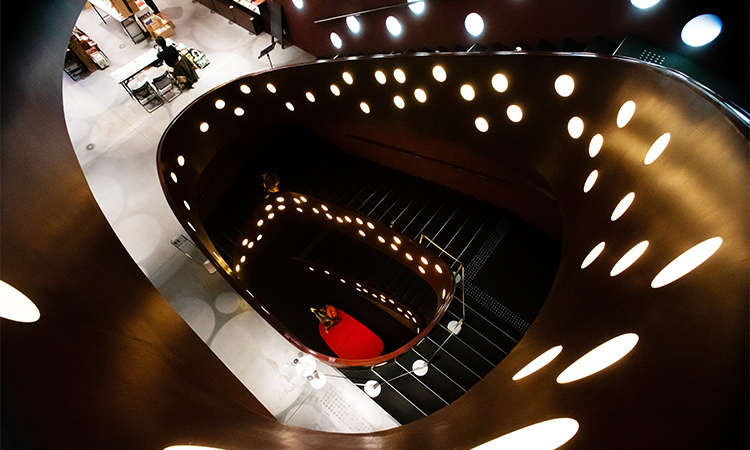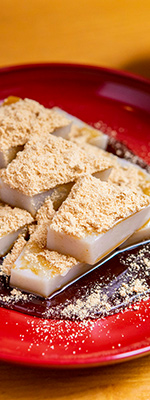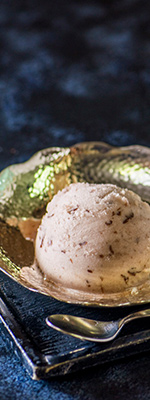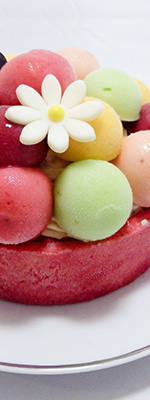
by Globally Renowned Architects
in Shops Designed
by Globally Renowned
Architects
In 21st-century Tokyo, shops designed by globally active Japanese architects, offering unique sweets to customers, are being built one after the next. We selected three of these new sweets-and-tourism destinations to introduce to our readers.
[Text: Kei Shiomi/Photographs: Fumie Nakajima]
Kengo Kuma Partners with a
Famous Japanese Cuisine Restaurant
Sweets shop Kuriya Kashi Kurogi on The University of Tokyo's Hongo Campus was designed by Kengo Kuma, an architect who also worked on the New National Stadium for the Tokyo 2020 Olympics. Kuriya Kashi Kurogi is just 5 minutes on foot from Hongo-sanchome Station, just inside the university's Kasuga Gate. It can also be reached in a roughly 5-minute walk from the university's Akamon Gate, a nationally designated Important Cultural Property. In fact, many outside visitors stop by this shop for a quick treat in addition to student customers.
The shop was opened in 2014, the year after “Washoku” (traditional Japanese cuisine) was designated as an intangible cultural heritage by UNESCO. Jun Kurogi, owner of celebrated Japanese restaurant Kurogi in Tokyo's Shibadaimon neighborhood, and Kengo Kuma, a professor at The University of Tokyo known for his use of Japanese materials in his architectural designs, worked together to achieve Japanese-style architecture and sweets here at Kuriya Kashi Kurogi, based on the goal of promoting further advancements in Japanese culture.
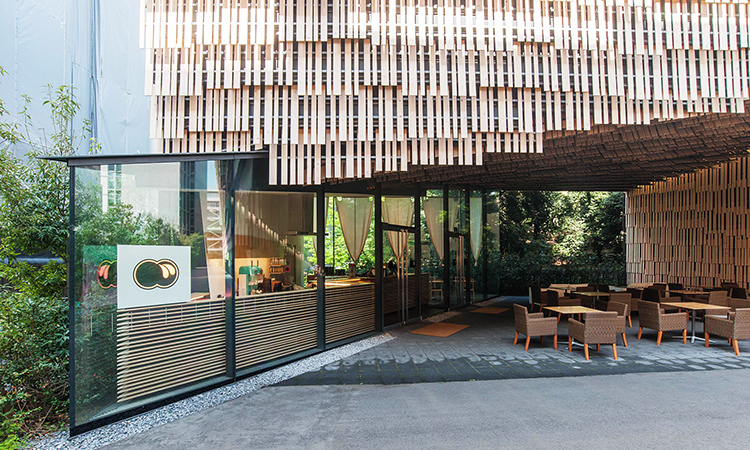
The exterior design, featuring thin Japanese cedar boards arranged in fish-scale fashion, is an example of Kuma at his best. Close examination reveals that lengths of boards vary throughout and the intervals differ at random, giving rise to an unconventional yet soothing expressive form. The interior design was also carried out by Kuma, with the cooking counter situated at a lower-than-usual level so customers can watch as the skilled chefs prepare their sweets. The shop is well-lit from wall to wall, its lighting design imparting a certain feeling of tension and making the shop an object for viewing by outsiders. The outdoor patio seating is surrounded by wooden materials to the side and overhead, helping it blend with the surrounding scenery and creating the sensation of sitting beneath a tree's shade.
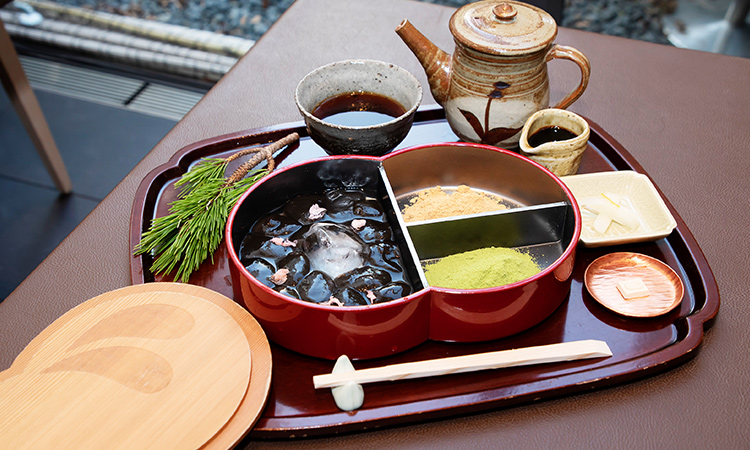
Fans of architecture and sweets alike, from Japan and other countries, often stop by to enjoy the Warabi-mochi (jelly-like bracken starch confections) and drink set priced at ¥2,750—this popular set sells to more than 30 customers every day! Upon receiving an order, the expert chef starts by mixing 100% pure bracken starch powder with water and a small amount of brown sugar syrup (kuromitsu), then kneading the mixture together. This rare, pure bracken starch is from Kyushu and has a unique gray-brown coloring. The chef quickly mixes the ingredients with a ladle, and the mixture quickly turns jet-black and lustrous in appearance. The finished Warabi-mochi are served in ice water which gives them a fresh, delectable look to accompany their aroma so reminiscent of the Japanese countryside. Their slippery, jelly-like texture makes them tough to grab with the chopsticks, yet they have a surprisingly springy and resilient feel in the mouth. After tasting the warabi-mochi alone, customers often sprinkle on the accompanying deep-roasted soybean flour (Kinako) and roasted green soybean flour and matcha green tea blend (Uguisu Kinako), as well as pouring some rich-tasting brown sugar syrup over the top. The Warabi-mochi are garnished with pickled cherry blossom petals, resulting in a colorfully elegant mix of black, pink and ochre that leaves a lasting impression. The set's accompanying coffee is an original blend designed to pair well with Japanese sweets, provided by Sarutahiko Coffee whose main shop is located in the upscale Ebisu district. Each cup is brewed by a Sarutahiko Coffee–certified barista and offers a refreshing, tea-like flavor.

The sweets produced by the Japanese restaurant staff at Kuriya Kashi Kurogi are made with a full focus on achieving good balance between the five flavor profiles as well as excellent texture. One example of this is their brown sugar syrup and roasted soybean flour shaved ice (¥1,650), which features a generous serving of espuma-style, brown-sugar-syrup shaved-ice cream so finely shaved that it doesn't resemble ice at all, complemented by soy sauce—their secret ingredient—to give it a sweet-and-salty taste. Walnuts are added in to impart a crunchy texture that makes the treat a pleasure to eat right down to the last bite. This approach of adding a small, accenting element to the overall whole is a characteristically Japanese way of deepening the flavor experience.
[Location]7-3-1 Hongo, Bunkyo Ward, Tokyo
Daiwa Ubiquitous Computing Research Building 1st floor, near The University of Tokyo Hongo Campus' Kasuga Gate
[Access]Hongo-sanchome Station (Tokyo Metro, Toei subway lines)
[TEL]03-5802-5577
[Hours / fixed holidays]
10:00 a.m.–7:00 p.m. (last order at 6:00 p.m.)
Closed on Wednesdays from November to February, university test days, and other irregular business holidays
[Official site] http://www.wagashi-kurogi.co.jp/
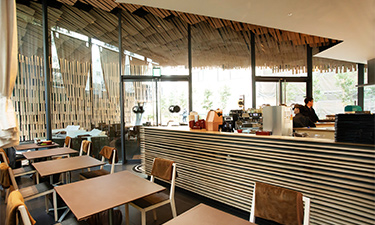
Architecture with the Performing Arts
Suginami Ward's ZA-KOENJI Public Theatre serves as a prime example of how theatre facilities are not for viewing stage drama alone. Located 5 minutes on foot from the north exit of Koenji Station, this theatre is in a mixed commercial-residential district and resembles a circus tent in appearance. Nothing of the interior can be seen from the outside, so most visitors aside from theatre fans find themselves hesitant to enter the first time. Those who take the plunge find themselves faced with circular, dot-like light patterns plunging into the building's depths, scattered along a spiral staircase. Following their curiosity, one might continue to the second floor, where they would come across cafe and restaurant Henri Fabre.
